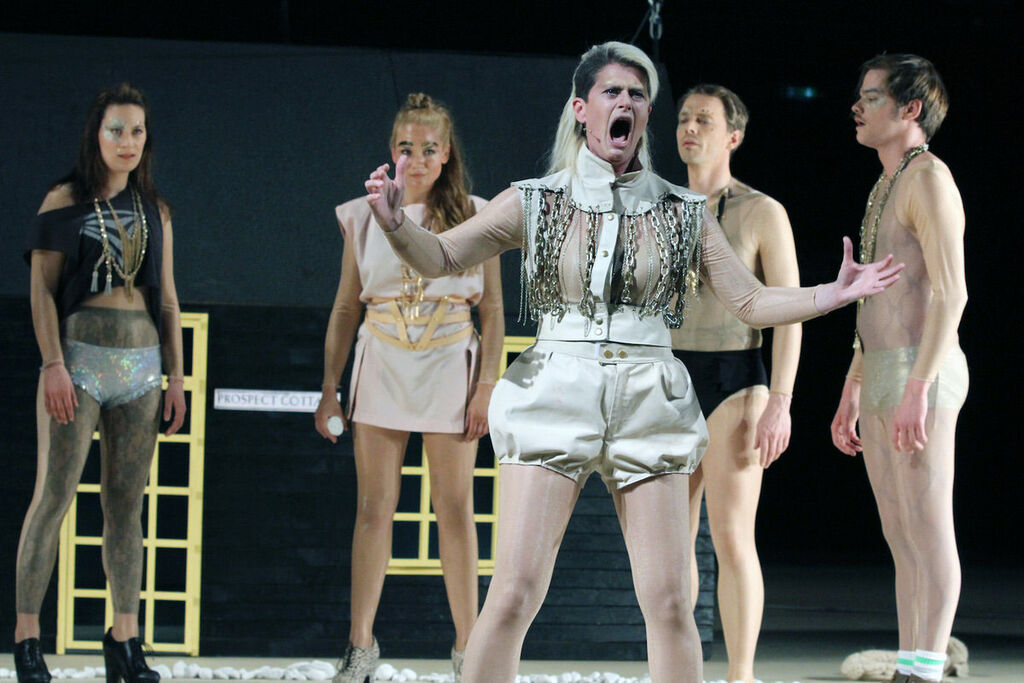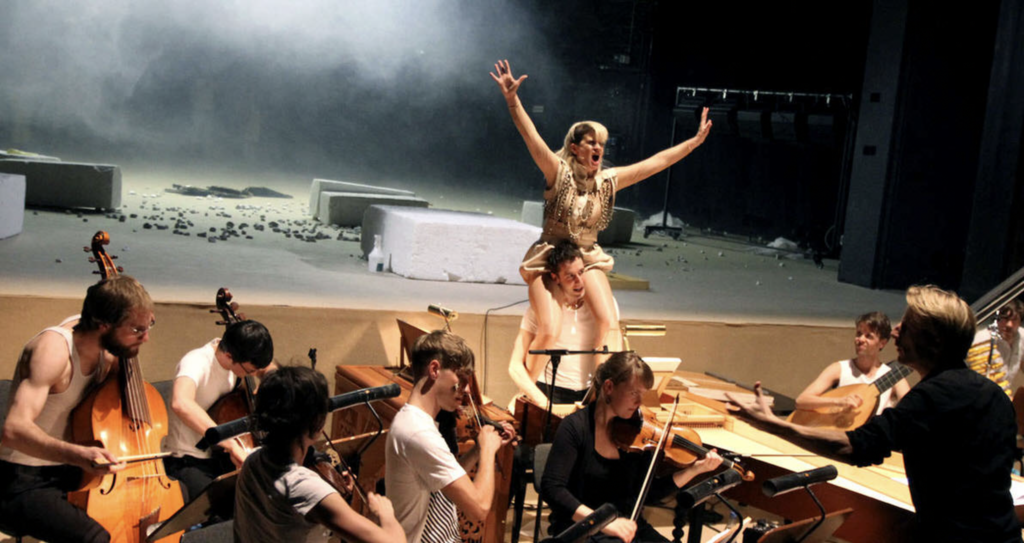L’Orfeo mit Peaches


The opera “L’Orfeo”, composed by Monteverdi at the start of the 17th century, was one of the first modern operas ever written. The piece tells the story of the singer Orfeo who enchants people with his singing and triumphs over the Underworld. In the production at Hebbel am Ufer 1 (HAU 1) in Berlin, Orfeo was played by the Canadian singer and performance artist Peaches. One of its main themes focused on the gender discourse, with which she is associated. In terms of historical performance practice, it was customary to have castrated males play female roles.
In the production at HAU 1, La messaggera and Speranza were played by countertenors. Based on the post-gender ambivalence of these characters, director Daniel Cremer presented a utopian community which initially celebrates itself and then spirals into ecstasy. After receiving news of the death of his wife Euridice, Orfeo leaves the community and ventures out to rescue her from the Underworld with his enchanting song.
The production’s musical director was the Baroque specialist Olof Boman. Performing with historic instruments, the Solistenensemble Kaleidoskop emphasized the extraordinary intimacy and emotionality of the music. They also experimented with the composition. Early Baroque music is well suited for experimentation, as the original notation was not exact, and individual interpretation and radical changes to the music was common practice at that time. Working closely with Peaches, several of the pieces were adapted and transferred into her musical cosmos – without changing the instrumentation. However, the musicians electrically amplified and distorted the sound of their instruments. This first encounter with the opera opened up a new musical world to Peaches. She, too, provided the opera with pop-musical impulses of her own – a productive experiment for both sides.
The premiere took place at HAU 1 at the beginning of May 2012, and was followed by four additional performances.